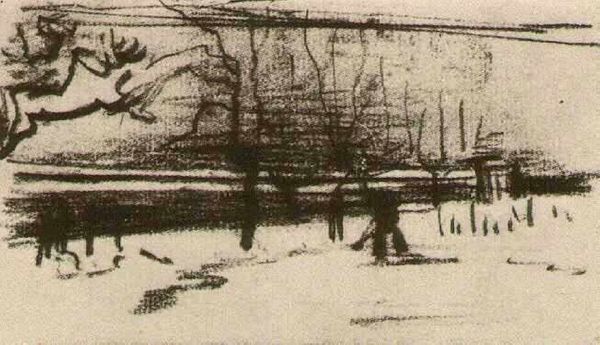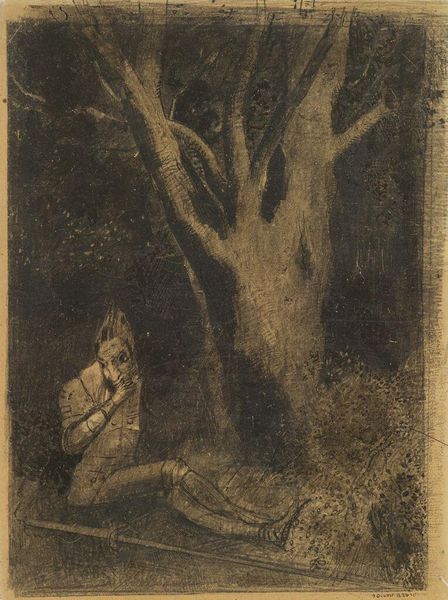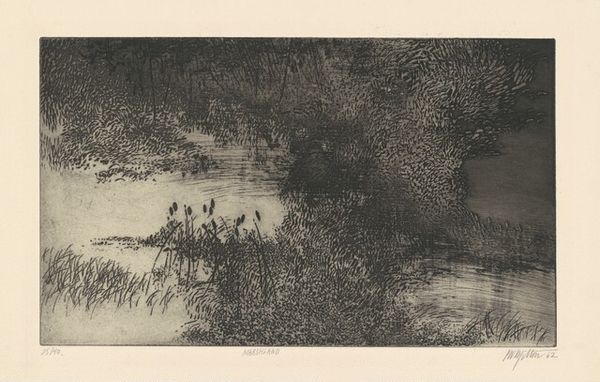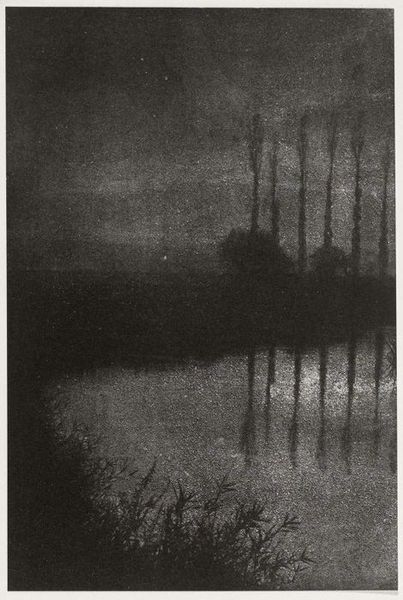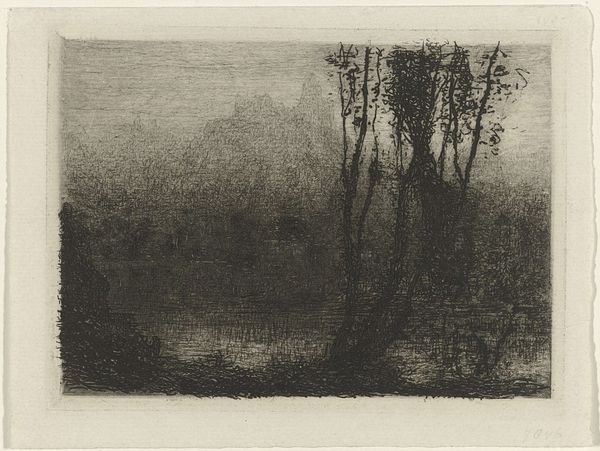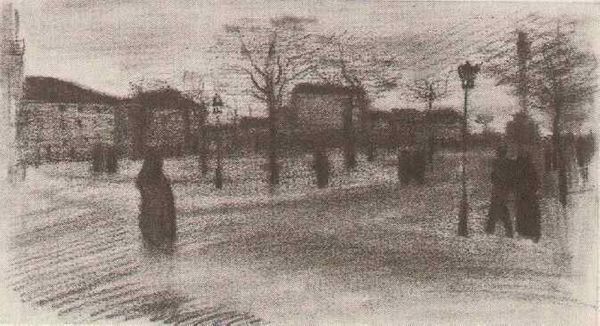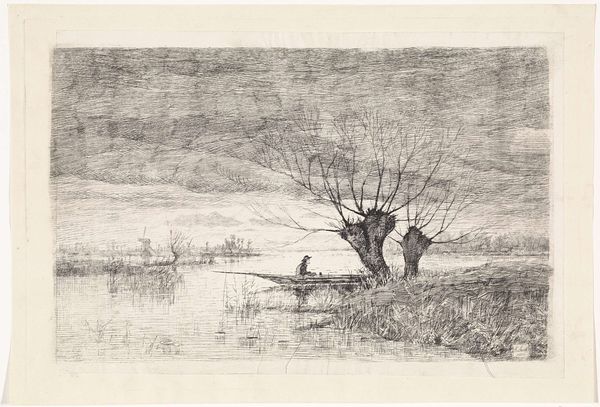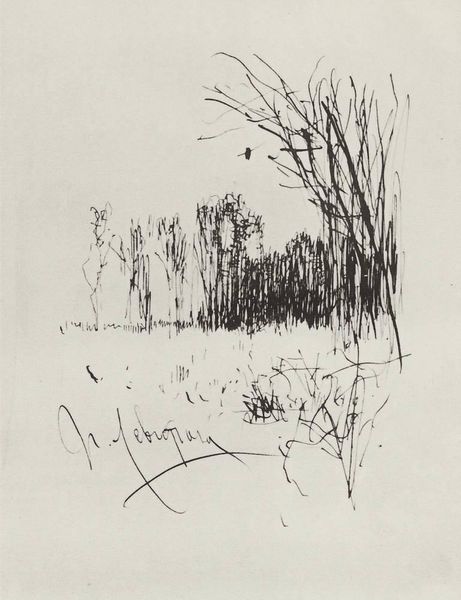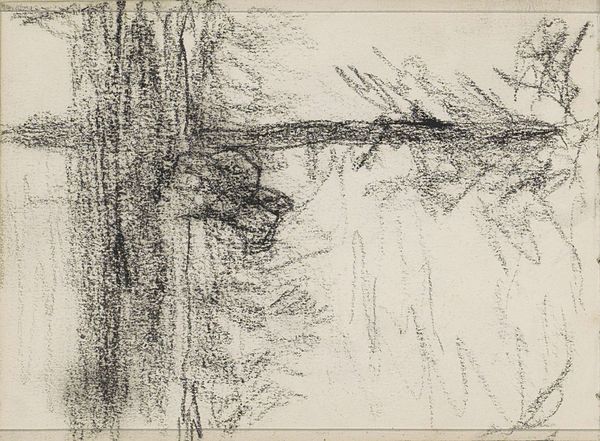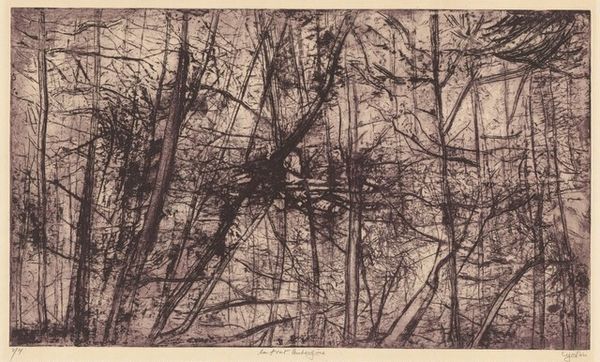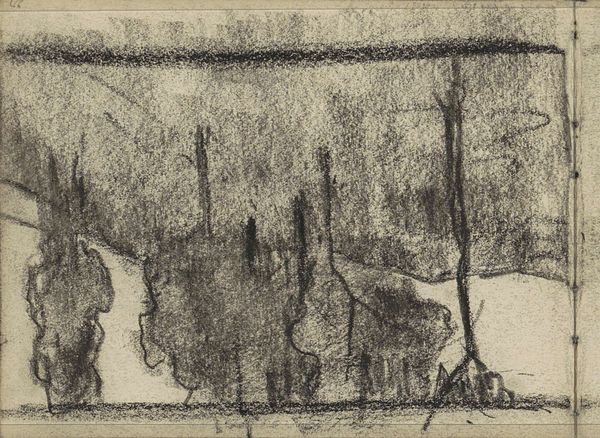
drawing, plein-air, paper, pencil, pastel
#
drawing
#
impressionism
#
plein-air
#
landscape
#
paper
#
pencil
#
pastel
Copyright: Public domain
Editor: Here we have Van Gogh's "Parsonage Garden at Dusk," created in 1885 using pencil and pastel on paper. There’s a starkness to it, almost a loneliness, with those bare trees and shadowy figure. How do you interpret this work, especially considering the period in which it was made? Curator: That feeling of starkness resonates deeply, especially when we consider Van Gogh’s life at that time. He was living with his parents in Nuenen, and his relationship with his family, particularly his father, was strained. This drawing, with its somber mood and focus on the garden, can be seen as a reflection of his inner state and social isolation. It speaks to a complex socio-political moment too. What did entering the parsonage represent at the time? Editor: That’s fascinating! I hadn't considered his personal life in such direct connection to the subject matter. Did the "parsonage" hold any public value in the community or in Vincent’s imagination, in a way that he expressed here with the pencil and pastels? Curator: Absolutely. The parsonage, the home of the minister, was a central space within the community. Representing social structure, spiritual authority, and moral guidance. By portraying it at dusk, in a muted palette, Van Gogh might be subtly questioning these traditional structures, or at least expressing his own detachment from them. The "plein-air" sketch invites us to consider the complex ways in which space shapes human relationships and experience, wouldn’t you agree? Editor: I see what you mean. It adds a whole new layer of meaning to the drawing. Thanks so much! I’ll definitely be looking at Van Gogh with a different perspective now. Curator: Indeed. Art like this reveals a lot not only about the artist but the culture he lived in. It's all in seeing beyond the surface.
Comments
No comments
Be the first to comment and join the conversation on the ultimate creative platform.

